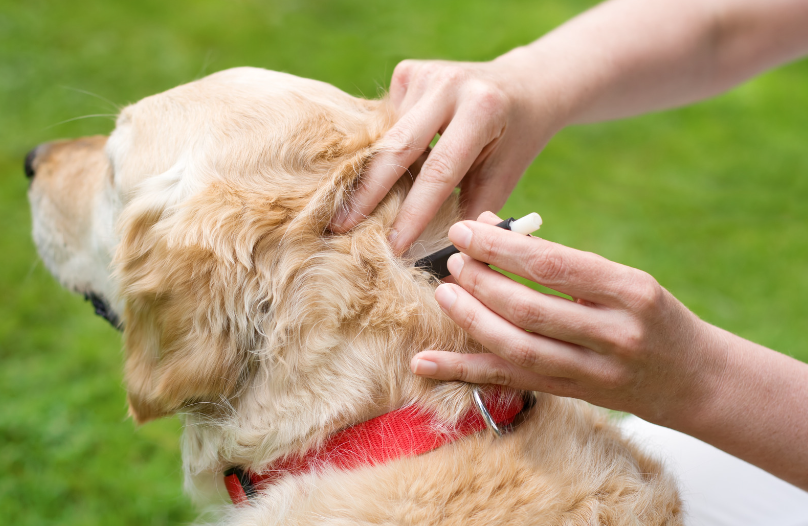Nature lovers know it all too well: ticks are small but dreaded critters that attach themselves to their hosts and can transmit nasty diseases. For dog owners, ticks are not only an inconvenience to their faithful four-legged friends, but also a potential threat to their health. Fortunately, there are several measures you can take to prevent and control tick bites on your dog. Let's take a look at some effective strategies.
Understand the enemy: What are ticks and why are they dangerous?
Ticks are small spider-like parasites that feed on the blood of their hosts. They are especially active in warm, moist environments, such as grasslands, forests and parks. Ticks can transmit several diseases, including the infamous Lyme disease, babesiosis and ehrlichiosis, which can cause serious health problems in dogs.
Prevention is better than cure: Tick prevention tips
- Use tick repellent products: There are several tick repellent products on the market, including collars, sprays, and spot-on treatments. Always consult your veterinarian before using a new product to make sure it is appropriate for your dog.
- Check regularly for ticks: Perform a thorough check on your dog's body daily, especially after walks in areas where ticks are common. Ticks often hide in warm and moist areas, such as armpits, groin area, around the ears and between the toes.
- Avoid tick-rich areas: If possible, avoid areas known to contain ticks, especially during tick season in spring and summer.
- Keep the grass short: Keep your yard well maintained by keeping the grass short and pruning shrubs. This reduces the chance of ticks in your immediate area.
- Consider vaccination: Some veterinarians offer vaccinations against specific tick-borne diseases, such as Lyme disease. Consult with your veterinarian about whether these vaccinations are appropriate for your dog.

Effective action against tick bites
- Remove ticks as soon as possible: If you discover a tick on your dog, remove it immediately with a special tick tool or hook. Be sure to remove the tick completely, including the head, to prevent infection.
- Disinfect the bite site: After the tick is removed, clean the bite site thoroughly with an antiseptic solution to prevent possible infections.
- Keep an eye on your dog's health: In the days following a tick bite, pay close attention to tick-related symptoms in your dog, such as fever, lethargy, loss of appetite, and lameness. Consult your veterinarian if you suspect your dog has become ill from a tick bite.
Conclusion
Tick bites are not to be underestimated when it comes to your dog's health. Fortunately, there are several preventive measures you can take to avoid tick bites, such as using tick repellent products, regular checkups and avoiding tick-rich areas. If your dog does get bitten, acting quickly is crucial to minimize the risk of illness. With a combination of precautions and effective action, you can protect your furry companion from the dangers of tick bites.
Also read our blog about the dangers of grass ear.
Comments
0 comments





